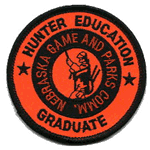Nebraska Game and Parks Commission
Date of this Version
January 1944
Abstract
A study of the ecology and management of the ring-necked pheasant (Phasianus c. torquatus) was begun in Nebraska in the spring of 1941. Prime among the objectives of the survey was to devise some method by which the populations could be estimated or counted. In conjunction with roadside counts as practiced in Minnesota, Iowa, Ohio, Pennsylvania and other states, attempts were made to derive a closer estimate than by that method. Every game technician working with roadside counts of pheasants realizes the difficulties involved. Having had success in estimating the numbers of mourning doves by counting their calls (McClure, H. E., Journ. Wildl. Mgt. 3: 323-328, 1939) a similar study of the calling of pheasants was undertaken. Throughout the summer of 1941 it was found that an average rooster in morning and evening, while establishing, feeding in, or surveying his grounds, would call at intervals of approximately 2 minutes. During these observations it was noted that these birds responded by crowing following thunder, blasting or the explosions of shot guns. Even such noises as the slamming of a car door or banging on a metal tub would stimulate them to crow.


Comments
Published in The Journal of Wildlife Management Vol. 8, No. 1, January, 1944. Copyright (c) 1944. Used by permission.